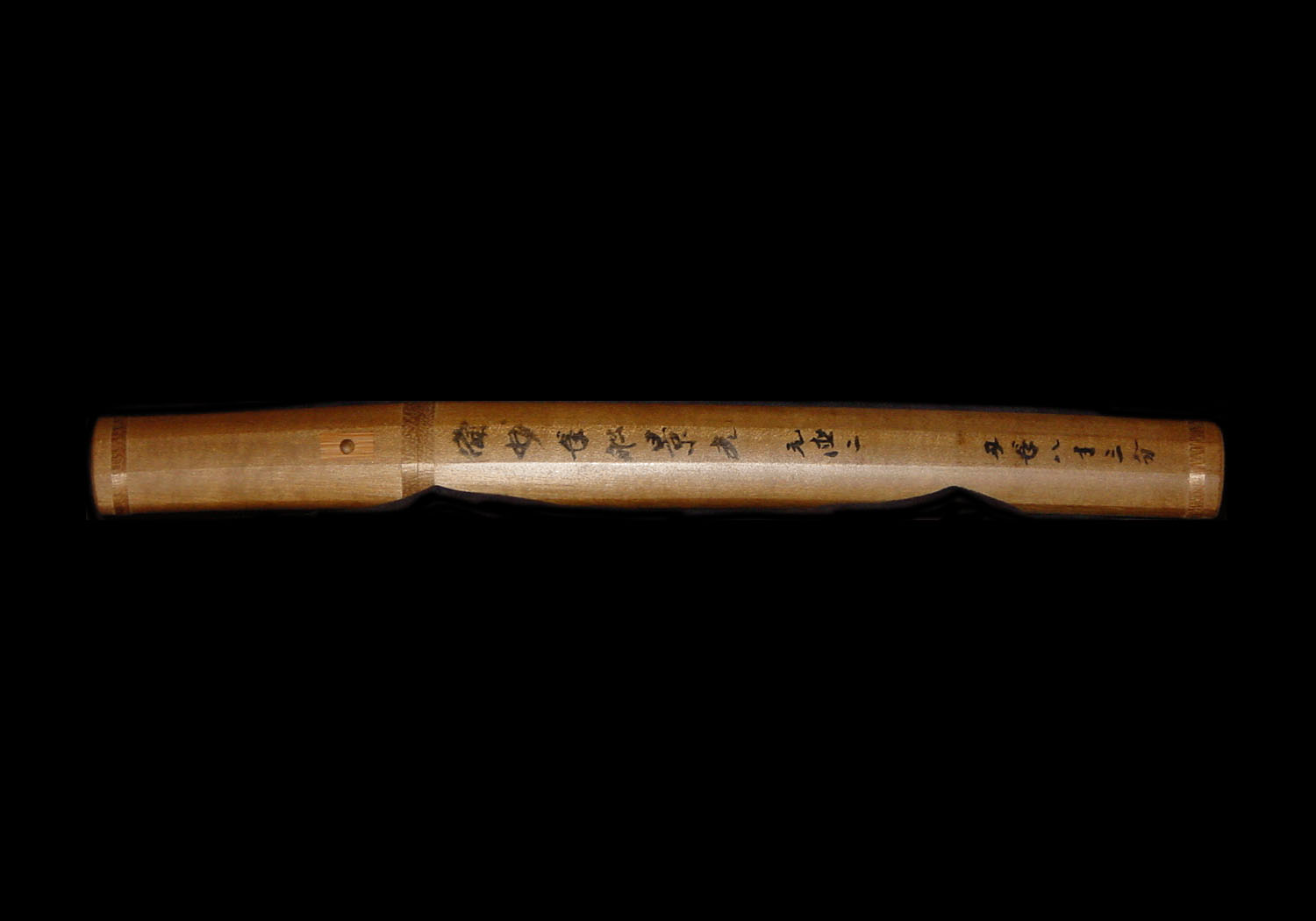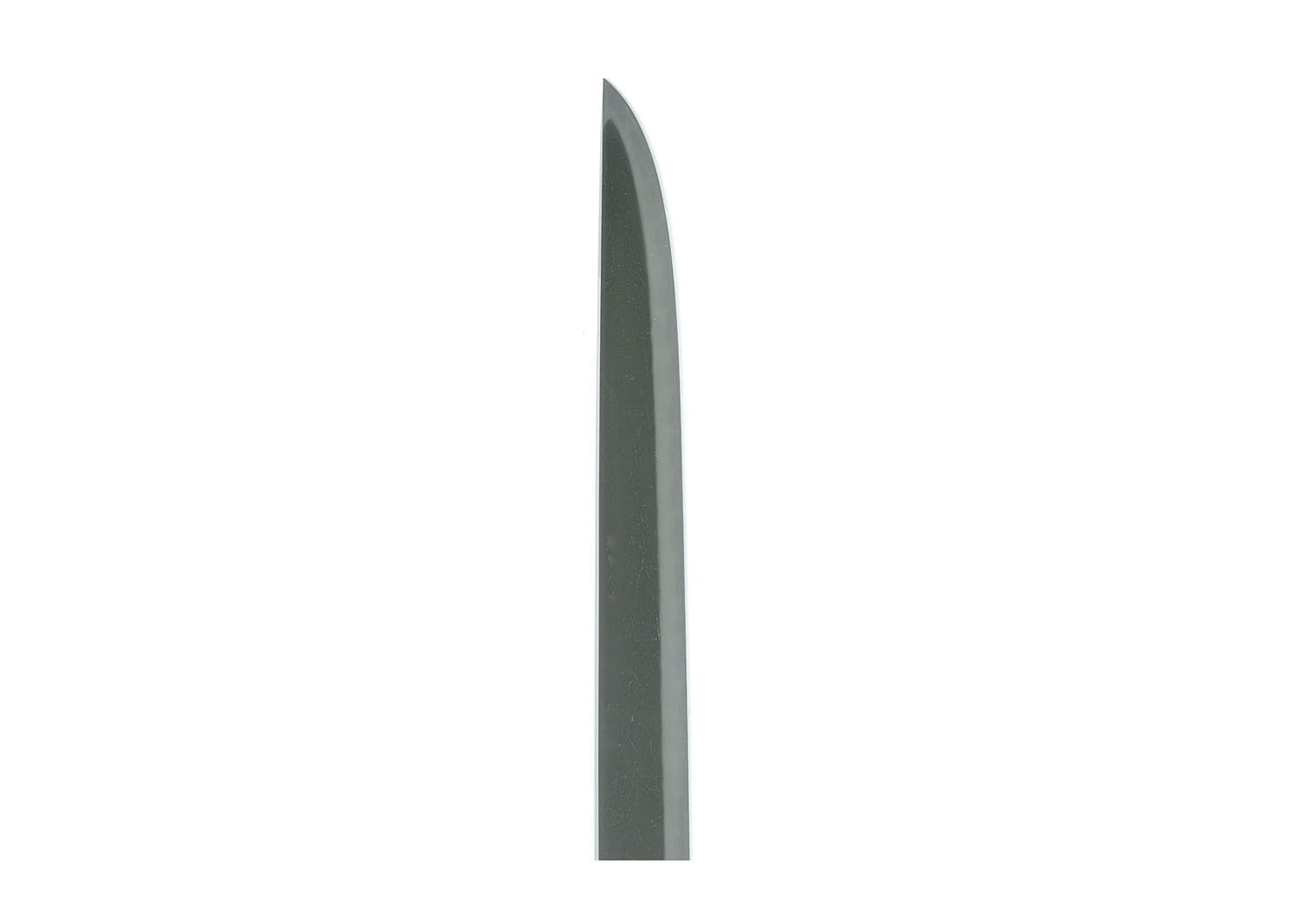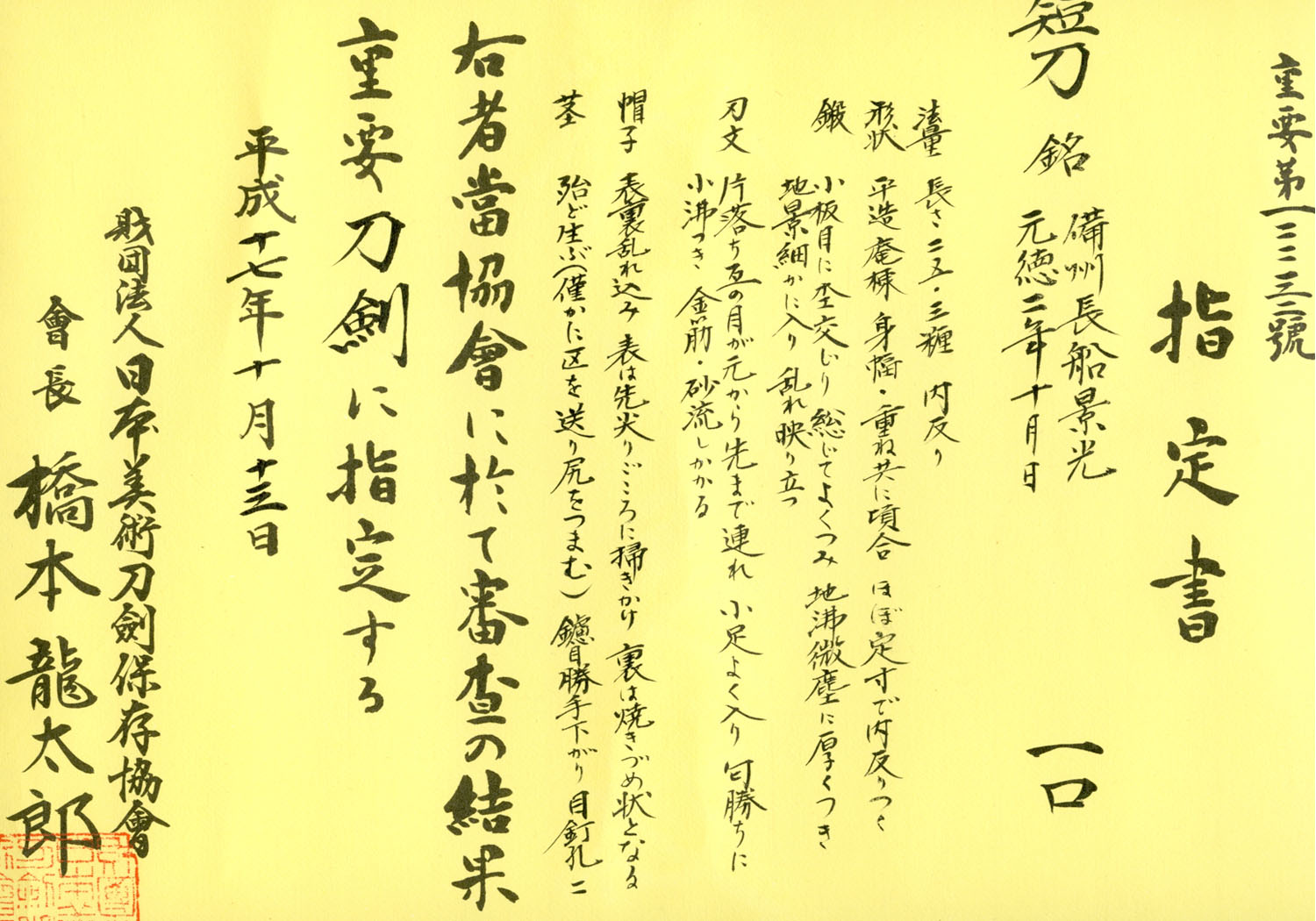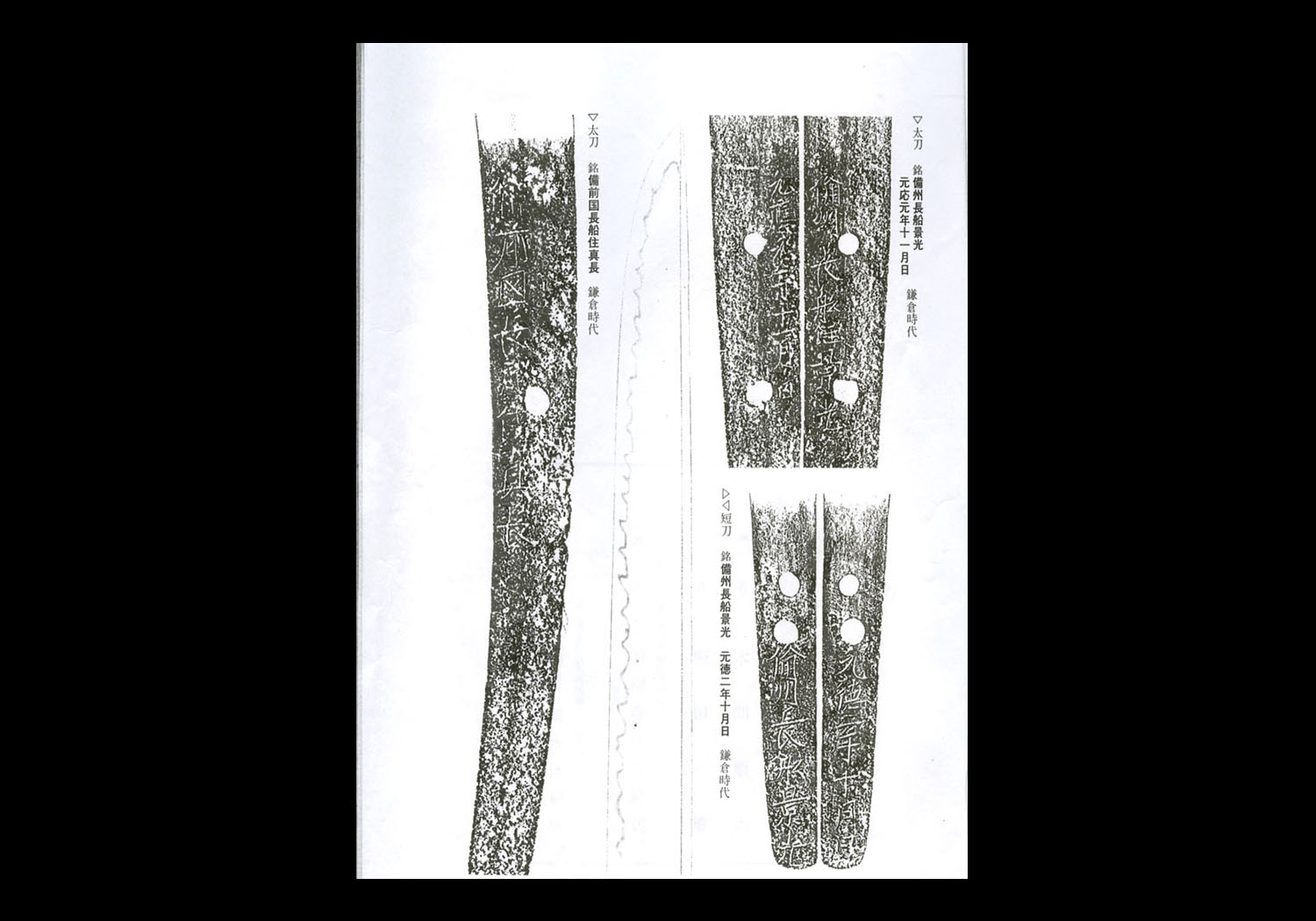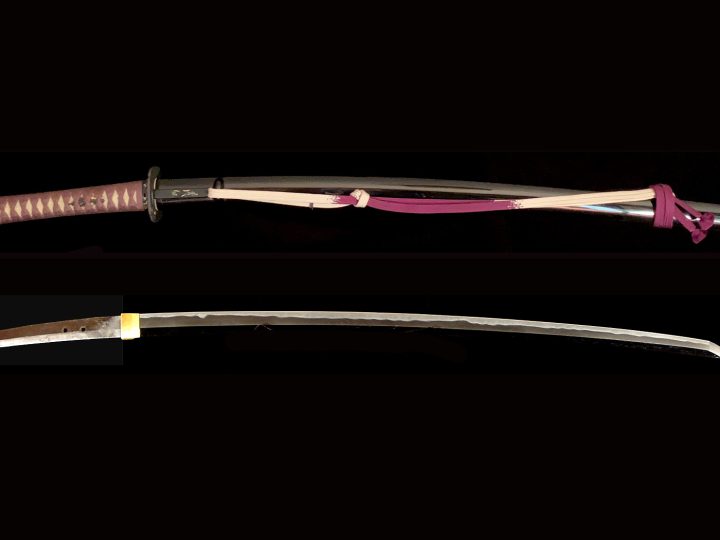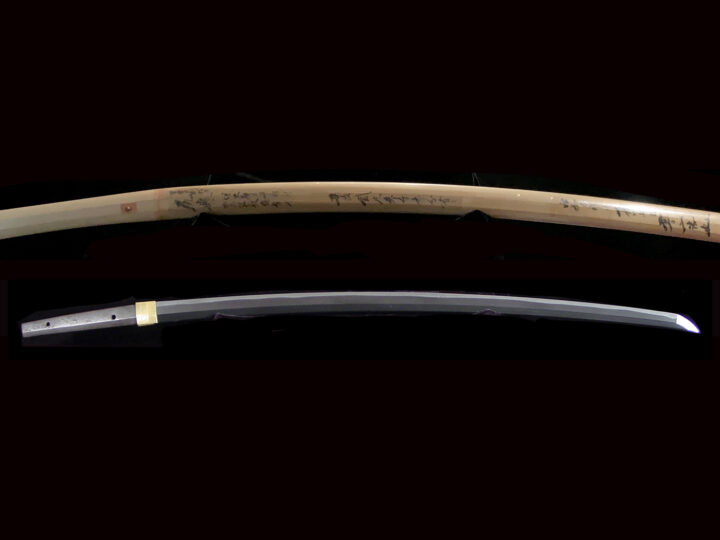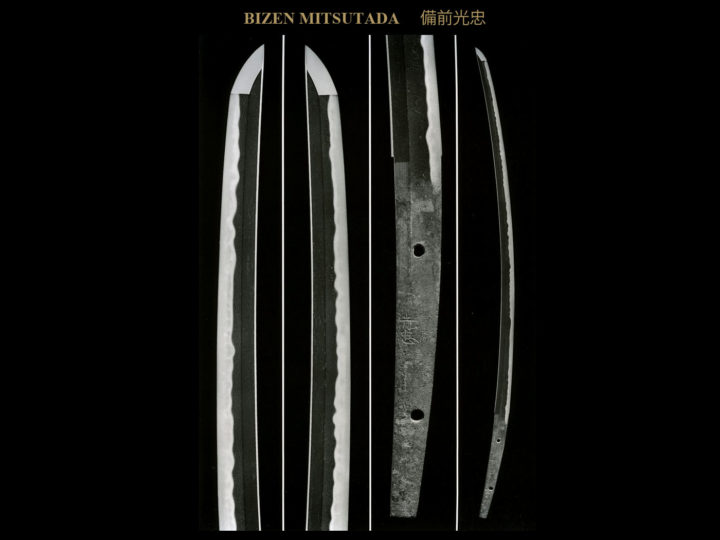
Bizen Kagemitsu was the son of Bizen Nagamitsu who was, in turn, the son of the founder of the Bizen Osafune School, Mitsutada. The works by these first three generations of smiths solidified the foundation of the Osafune School into one of the greatest sword making schools of all time.
Bizen Kagemitsu is called Sahyohenjo in most accounts and his dated works show that he ws born in the latter part of the 13th century. We have works from him dating from the Kagen Era (1303) through the Kenmu Era (1335). While his father and teacher, Nagamistu, did not leave many tanto, Kagemitsu, on the other hand, left us a good number of fine tanto that have survived through the years. He also made extraordinary tachi and katana.
There exists one tachi and one tanto that have been designated to be National Treasures (Kokuho), and twelve tachi and one tanto that have been classified as Important Cultural Properties (Juyo Bunkazai). Finally there are ten tachi, two katana, and eight tanto that are designated to be Important Art Objects (Juyo Bijitsuhin). This is a very impressive list indeed.
Kagemitsu was an important link in the succession of great smiths from the Osafune School. We know he was the son of Nagamitsu, but we also know he was the older brother and teacher of Kagemasa. We know that there was a close relationship between these two smiths because of the fact that the works of Kagemasa closely resemble those of Kagemitsu especially in the slight bit of ashi that appears in the suguha of both smiths.
Another important contemporary of Kagemitsu was Chikakage. We know of the relationshiop between these two smiths for a number of reasons. First both were contemporary in time and both were students of Nagamitsu. Also during the latter period of Kagemitsu’s life, we find swords with an unusual signature, i.e. signed with the chisel cuts done in a reverse manner (saka-tagane). It is known that Chikakage cut this type of signature in works he substitute-signed for Kagemitsu. Such a situation would only occur where there was a close working relationship.
Kagemitsu also passed along his legacy to his son, Kanemitsu, who became known as O Kanemitsu. Kanemitsu worked well into the Nanbokucho Era. Kanemitsu went on to lead the Osafune School and influenced such well known smiths as Tomomitsu, Yoshimitsu, Hidemitsu, Motomitsu, Masamitsu, and Shigemitsu.
This tanto is an excellent example of Kagemitsu’s work and the condition is superb. The following is a translation of the Juyo Token Zufu write-up for this tanto:
Designated Juyo Token at the 51st shinsa held on the 13th of October, 2005.
Tanto: Bishu Osafune Kagemitsu; Gentoku ni-nen ju-gatsu hi(a day in the 10th month, the 2nd year of Gentoku, 1330).
Dimensions: Length: 25.3 centimeters; Uchizori; Width at the Base: 2.1 centimeters; 2.1; Nakago Length: 2.4; Nakago Curvature: none.
The construction is hira-zukuri with an iori-mune. Both the width and thickness are suitable, and the length is typical. The tanto shape has uchizori. The kitae is ko-itame mixed with mokume that is very tight. There is a slight covering in ji-nie, and there are minute chikei. The midare-utsuri is prominent. The hamon is essentially kataochi-gunome with a tinge of midare. There is abundant ko-ashi activity, and the habuchi is nioi based with a ko-nie covering. There are kinsuji and streaks of sunagashi. The boshi is midare-komi, and on the omote the tip has a pointed feeling with brushing, and the ura is yakizume. The nakago is almost ubu (it is slightly machi-okuri with the end of the nakago shortened), the end of the nakago is kurijiri, and the yasurime are kattesagari. There are two mekugi-ana, and below the second mekugi-ana (the original mekugi-ana) in the center of the sashi-omote side, there is a large-sized and long signature with a date on the ura in the same position.
Description: Kagemitsu is the son of Nagamitsu and the third generation Osafune smith. He is famed for perfecting the kataochi-gunome style hamon. His periods of workmanship are from Kagen (1303-1306) during the late Kamakura period to Kenmu (1334-1336) at the beginning of the Nanbokucho period, which extends over a period of around 30 years. His style of workmanship is not as flamboyant as that of Nagamitsu, and suguha-based works with a mixing in of slanted gunome along with kataochi-gunome are the main types of hamon he tempered. As a rule, his style of workmanship is more subdued than that of Nagamitsu; however, regarding the excellence of his kitae, works can be seen that in particular surpass his father’s. Moreover, it is a characteristic of Kagemitsu to have a large number of extant tanto in contrast to the few produced by Nagamitsu.
Regarding this tanto, the length is virtually perfect, and the shape is an elegant uchizori. The kitae is ko-itame mixed with mokume that is very tight. There is a slight covering in ji-nie, and there are minute chikei. The midare-utsuri is prominent. The hamon is essentially a kataochi-gunome tempering that contains abundant ko-ashi. The habuchi is nioi based and covered in ko-nie. All of these features clearly display Kagemitsu’s characteristics. The kitae with is sparse covering in ji-nie is gorgeous, and the hamon is typical of this smith. The characters that are clearly engraved on the nakago are a great pleasure.
This tanto comes with a fabulous koshirae with a beautifully lacquered saya depicting a phoenix bird in flight. The menuki are solid gold with kiri mon. The kozuka is Goto school also with gold kirimon. The blade comes in an old shirasay with a precious sayagaki by the late Dr. Junji Honma of the NBTHK that is dated Kinoe Tatsu (1964). Not only did Honma sensei think enough of this blade to write the sayagaki, he also was impressed enough to include an oshigata of the nakago on page 243 of his book, MEITO NO MIDOKORO KIWAMEDOKORO published in 1979.
I highly recommend this tanto and koshirae.
PRICE: $89,500


